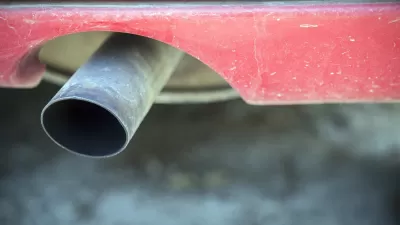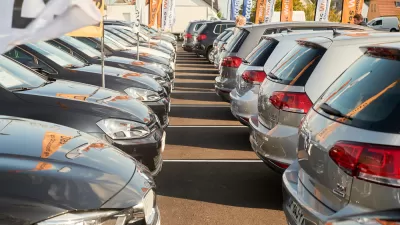The Biden administration finalized greenhouse gas (GHG) emissions standards for passenger cars and light trucks that almost fully erased changes by the Trump administration that, in turn, erased a rule finalized by the Obama administration.

The Environmental Protection Agency (EPA) on Monday announced new federal greenhouse gas (GHG) emissions standards for passenger cars and light trucks for model years 2023 through 2026. A U.S. Environmental Protection Agency rule summary announced the finalized standards. According to the rule summary, the new standards are consistent with the "Strengthening American Leadership in Clean Cars and Trucks" Executive Order signed by President Joe Biden in August 2021.
An article for The Washington Post, by Dino Grandoni, Faiz Siddiqui, and Anna Phillips, provides more details on the announcement, headlining a comparison between the newly finalized rule and the actions of the previous administration. To describe the details of the new rule, the article includes this summary:
The standards for model years 2023 to 2026, signed Monday morning by EPA Administrator Michael Regan, require that cars, SUVs and pickup trucks release an average of 161 grams of carbon dioxide per mile by 2026. The new Biden standards are equivalent to an average of roughly 55 miles per gallon by 2026 in laboratory testing. The average figure appearing on window stickers — and advertised EPA mileage — would be 40 mpg.
While those standards appear drastic, they don't erase the rollback of emissions standards imposed by the Trump administration. Obama-era rules "would have achieved nearly the same emission cuts a year earlier," according to the article.
The article also notes that the new emissions standards fall short of the lofty ambitions of the Build Back Better bill, which was delt a final blow by U.S. Senator Joe Manchin (D-West Virginia) a few days earlier.
The new limits on tailpipe emissions for the next four years mark President Biden’s biggest step yet to tackle climate change, but the move comes as critical components of his plan for an all-electric future just suffered a major blow on Capitol Hill. On Sunday, Sen. Joe Manchin (D-W.Va.) announced he would not support his party’s Build Back Better plan, which would have provided billions in federal support for building charging stations and encouraging consumers to buy electric vehicles.
FULL STORY: New Biden rule reducing climate emissions from cars and SUVs reverses major Trump rollback

Alabama: Trump Terminates Settlements for Black Communities Harmed By Raw Sewage
Trump deemed the landmark civil rights agreement “illegal DEI and environmental justice policy.”

Planetizen Federal Action Tracker
A weekly monitor of how Trump’s orders and actions are impacting planners and planning in America.

How Atlanta Built 7,000 Housing Units in 3 Years
The city’s comprehensive, neighborhood-focused housing strategy focuses on identifying properties and land that can be repurposed for housing and encouraging development in underserved neighborhoods.

In Both Crashes and Crime, Public Transportation is Far Safer than Driving
Contrary to popular assumptions, public transportation has far lower crash and crime rates than automobile travel. For safer communities, improve and encourage transit travel.

Report: Zoning Reforms Should Complement Nashville’s Ambitious Transit Plan
Without reform, restrictive zoning codes will limit the impact of the city’s planned transit expansion and could exclude some of the residents who depend on transit the most.

Judge Orders Release of Frozen IRA, IIJA Funding
The decision is a victory for environmental groups who charged that freezing funds for critical infrastructure and disaster response programs caused “real and irreparable harm” to communities.
Urban Design for Planners 1: Software Tools
This six-course series explores essential urban design concepts using open source software and equips planners with the tools they need to participate fully in the urban design process.
Planning for Universal Design
Learn the tools for implementing Universal Design in planning regulations.
Jessamine County Fiscal Court
Caltrans
Institute for Housing and Urban Development Studies (IHS)
City of Grandview
Harvard GSD Executive Education
Toledo-Lucas County Plan Commissions
Salt Lake City
NYU Wagner Graduate School of Public Service





























